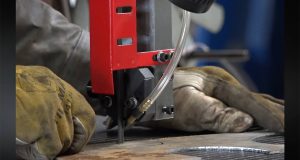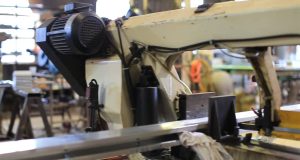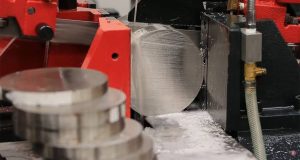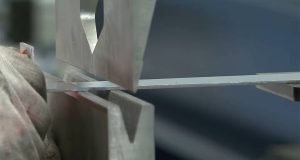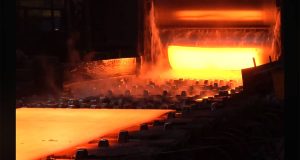What Are Bimetal Blades?
Bimetal blades are essential tools in various cutting applications, especially when it comes to working with metals. These blades are manufactured by combining two different types of steel, which results in a product that is both durable and precise. The back of the blade is made from a spring steel alloy, offering flexibility and strength, while the tooth tips are composed of high-speed steel, known for its hardness and resistance to wear. This construction allows bimetal blades to maintain their sharpness longer and withstand the demands of heavy-duty cutting tasks.
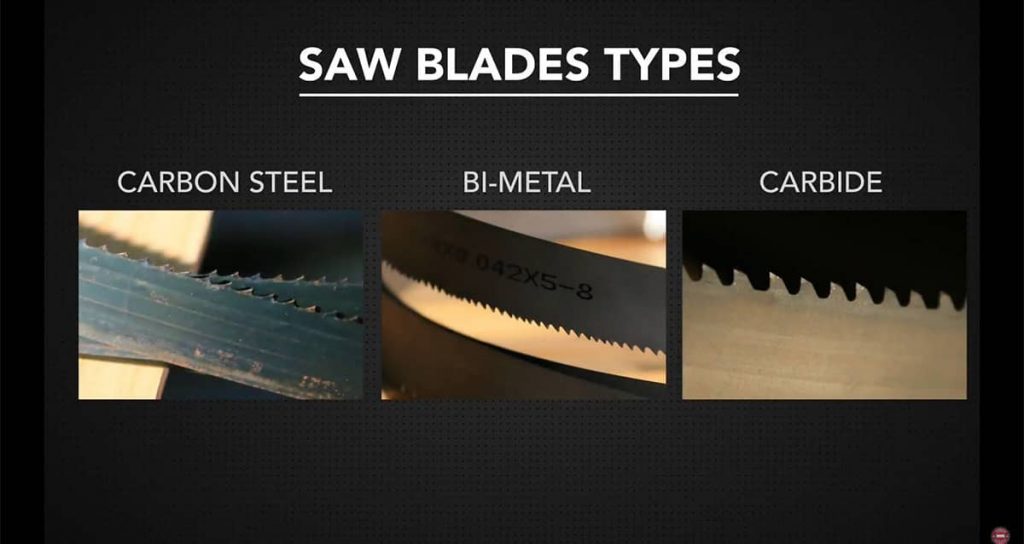
Key Benefits of Bimetal Blades
- Longevity: Bimetal blades last significantly longer than carbon blades, reducing the frequency of replacements.
- Versatility: They can cut through various materials including metals, plastics, and wood.
- Durability: The combination of spring steel and high-speed steel ensures the blade can endure high stress without breaking or dulling quickly.
- Cost-Effective: Although more expensive upfront, their extended lifespan makes them an economical choice in the long run.
Applications of Bimetal Blades
Bimetal blades are commonly used in industrial and workshop settings where precision and durability are critical. These blades are particularly favored for cutting hard materials like metals, but they are also effective for cutting wood and plastics. In metalworking, bimetal blades are indispensable for cutting through tough metals such as steel, aluminum, and stainless steel. They are also used in woodworking for cutting hardwoods and materials embedded with nails. Their versatility extends to cutting thick plastics, including PVC and other rigid polymers, where they deliver clean, precise cuts without causing damage to the material.
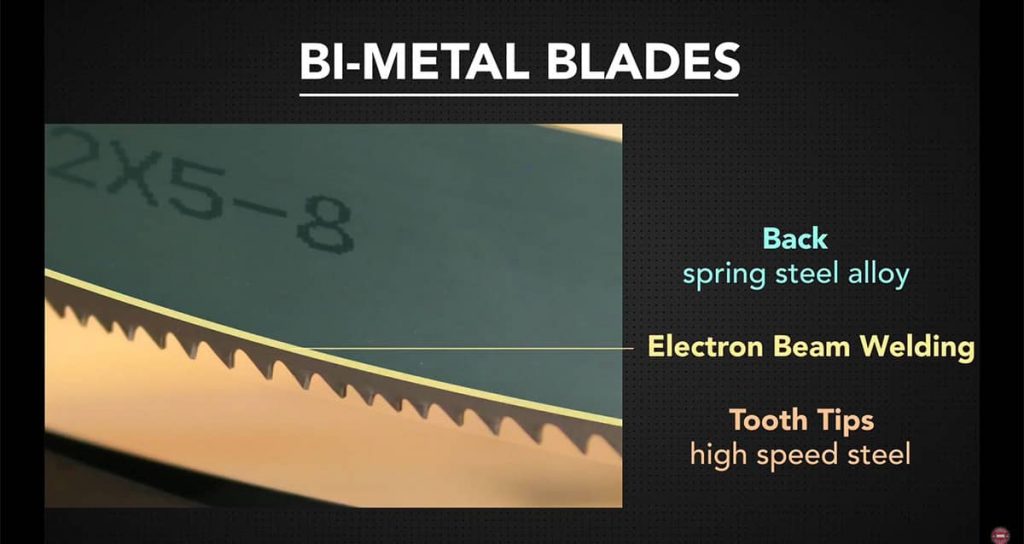
Maintaining Your Bimetal Blades
Proper maintenance is key to ensuring the longevity and performance of your bimetal blades. After each use, it’s important to clean the blade to remove any debris or material buildup that could dull the blade or cause overheating in future use. Regular lubrication is also essential, especially when cutting metals, as it reduces friction and heat, extending the blade’s lifespan. Additionally, regular inspection for wear or damage is crucial—replacing the blade when necessary prevents poor cutting performance and potential safety hazards. Proper storage in a dry, cool place, preferably in a blade case, helps prevent rust and protects the teeth from damage.
Portable Bandsaw Bimetal Blades: Key Specifications
| Feature | Details |
|---|---|
| Blade Width | 1/2 inch, 3/4 inch, 1 inch |
| Tooth Pitch | 10 TPI, 14 TPI, 18 TPI |
| Material Compatibility | Steel, Stainless Steel, Aluminum, Wood, Plastic |
| Blade Length | 44-7/8 inches, 56-7/8 inches, 64-1/2 inches |
| Typical Applications | Metalworking, Pipe Cutting, Fabrication, Woodworking |
| Expected Lifespan | Up to 5 times longer than carbon steel blades under proper use |
| Recommended Usage | Ideal for cutting metal pipes, solid bars, and structural shapes |
Choosing the Right Bimetal Blade
Selecting the right bimetal blade for your needs involves considering several factors. The material you plan to cut is the most important consideration, as different tooth pitches and blade widths are better suited for specific materials. For instance, finer tooth pitches are ideal for cutting thin materials, while coarser tooth pitches work better for thicker materials. Blade width also plays a role, with wider blades being more suitable for straight cuts in heavy materials, and narrower blades being better for intricate shapes and curves. Additionally, the grade of high-speed steel used in the blade tips can affect the blade’s wear resistance and is an important factor when working with particularly tough materials.
Tips for Enhancing Bimetal Blade Performance
- Use the Correct Cutting Speed: Adjust your cutting speed based on the material you’re working with—slower for hard materials, faster for soft ones.
- Tension the Blade Properly: Ensure that the blade is tensioned correctly in your saw; improper tension can lead to breakage or inaccurate cuts.
- Avoid Overheating: Use appropriate cooling methods like cutting fluids to prevent overheating, which can damage both the blade and the material being cut.
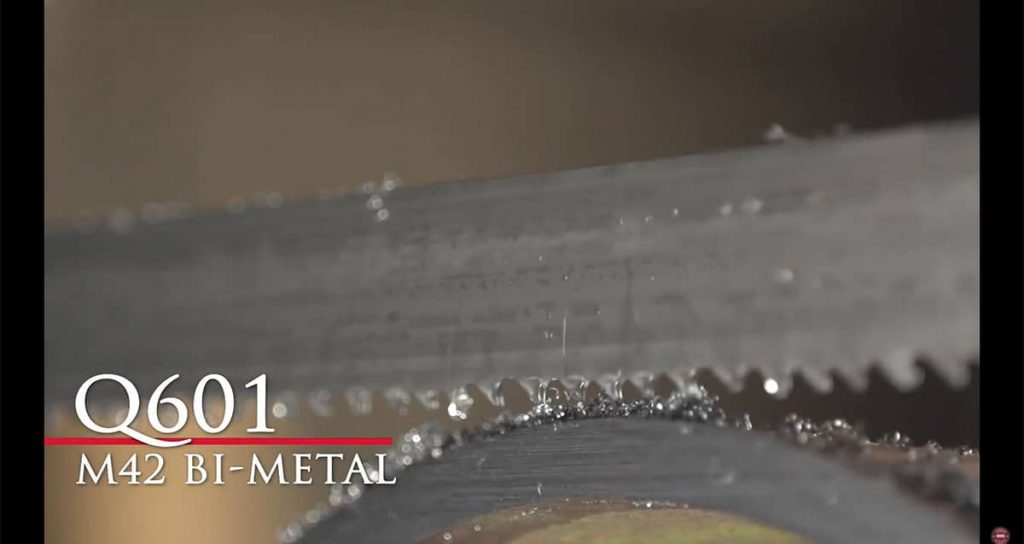
Discover the Q601 Series – Qsaw M42 Bimetal Blades at Sawblade.com
For those in need of a reliable, all-purpose band saw blade, look no further than the Q601 Series – Qsaw M42 Bimetal Blades, available at Sawblade.com. These blades are designed to be your “Go To” solution for cutting a wide range of materials, including high carbon steels, stainless steel, and alloy steel. With features like a 5-7 degree positive rake angle, M-42 cobalt high-speed steel edge, and ground tooth form, these blades ensure fast cutting rates and extended lifespan, even on challenging materials. Visit Sawblade.com today to explore more about this versatile blade and how it can save you time and cost on your cutting projects.
Watch the Latest Video from SawbladeUniversity on YouTube
For a hands-on approach to learning, don’t miss the latest video from SawbladeUniversity on YouTube. This informative content provides visual demonstrations and expert tips that are perfect for enhancing your understanding of cutting tools and techniques.
Explore the Impact of Crystal Structure on Metal Properties
Understanding how the crystal structure of metals influences their properties is crucial for anyone working with these materials. From strength and ductility to conductivity and corrosion resistance, the arrangement of atoms in a metal’s crystal lattice plays a significant role in determining its behavior under various conditions. For a deeper dive into this fascinating topic, be sure to check out our detailed article, “The Effects of Crystal Structure on Metal Properties,” where we break down the science behind these important characteristics and explain how they affect your everyday metalworking projects.
Discover More at SawbladeUniversity.com
If you’re eager to expand your knowledge and skills in the world of cutting tools, SawbladeUniversity.com is your next destination. Offering a wide range of online classes and in-depth resources, this platform is designed to help both beginners and seasoned professionals alike. Whether you’re looking to refine your techniques, learn about the latest tools, or dive into specialized topics, SawbladeUniversity.com has everything you need. Visit today and start exploring the wealth of information that can take your cutting expertise to the next level.
Bimetal blades are a reliable and versatile tool for a wide range of cutting tasks, offering durability, precision, and cost-effectiveness. By understanding their composition, key benefits, and proper maintenance, you can make the most of these blades in your workshop or industrial setting. Whether you’re cutting metals, wood, or plastics, choosing the right bimetal blade and following the correct procedures will ensure consistent, high-quality results and extend the lifespan of your blades.


